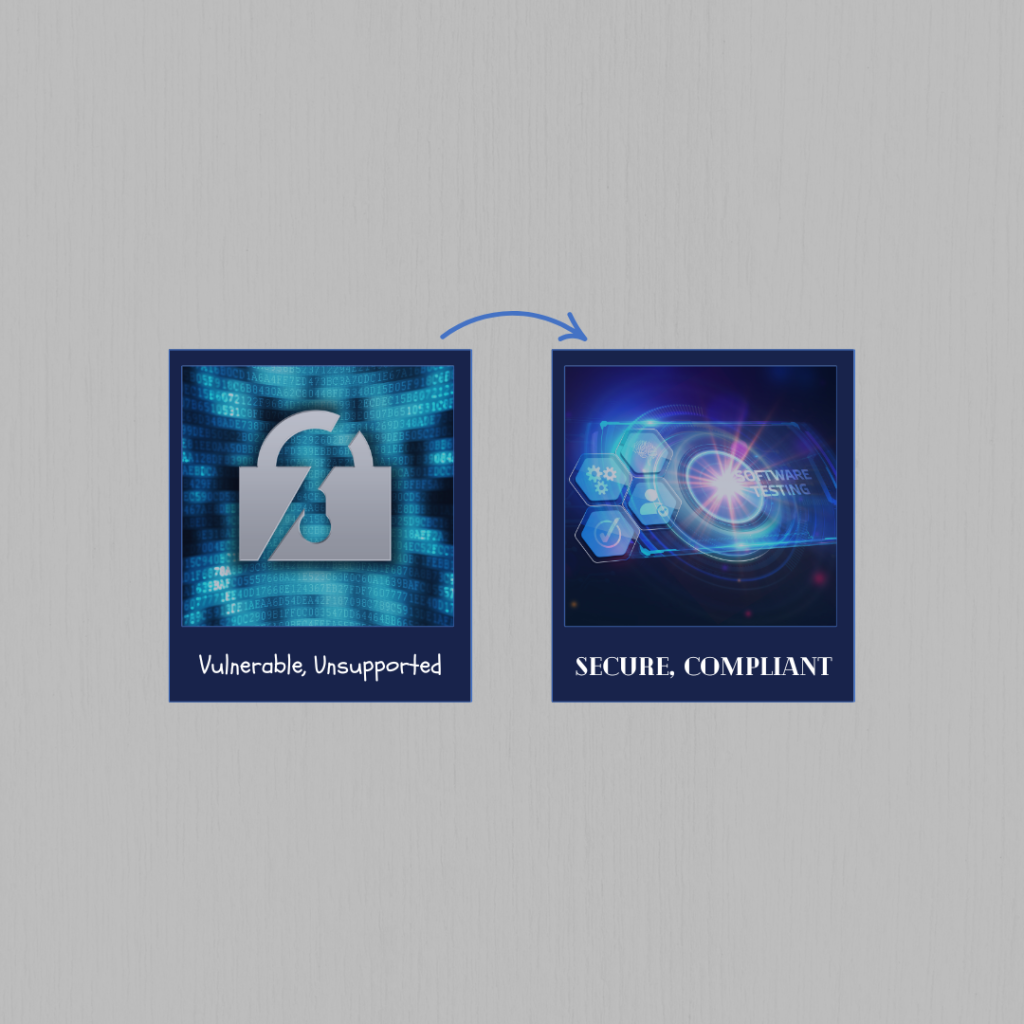Technology infrastructure is the backbone of business operations. However, it’s crucial to recognize that the performance, capacity, and utilization of our hardware and software assets don’t just impact internal efficiency—they directly affect our end users, customer satisfaction, and overall company productivity. The way we manage and optimize our IT resources plays a significant role in shaping the employee experience, influencing satisfaction, productivity, and ultimately, our business’s success. Here’s why tracking these elements is strategically important for both our end users, customers, and the organization as a whole.
Enhancing the End User Experience and Productivity
Ensuring Smooth, Uninterrupted Operations
Our employees are the driving force behind our company’s success. For them to be productive and deliver their best work, they need reliable, high-performing IT systems. By closely tracking the performance, capacity, and utilization of our hardware and software assets, we can ensure that our end users experience smooth, uninterrupted operations. This is crucial because any disruption in IT services—whether it’s a slow application, a malfunctioning piece of hardware, or a lack of storage space—can severely impact employee productivity.
For example, if an employee frequently encounters delays due to overloaded servers or slow software applications, their ability to perform tasks efficiently is compromised. Over time, these small delays can add up, leading to significant losses in productivity across the organization. By ensuring that IT systems are optimized and resources are adequately allocated, we can enhance employee productivity, allowing them to focus on their core responsibilities without being hindered by technical issues.
Reducing Frustration and Enhancing Job Satisfaction
When employees have the tools and resources they need to do their jobs effectively, their job satisfaction increases. On the other hand, constant technical issues can lead to frustration, disengagement, and even burnout. By tracking and optimizing the performance and utilization of IT assets, we reduce the likelihood of these issues occurring, creating a more positive and supportive work environment.
Happy and satisfied employees are more engaged, motivated, and committed to their work. This, in turn, leads to higher productivity, better collaboration, and a more innovative workplace. Ultimately, by investing in the performance and reliability of our IT systems, we are also investing in the well-being and effectiveness of our workforce, which directly contributes to the overall success of the company.
Supporting Overall Company Productivity
Streamlining Processes and Reducing Downtime
At the organizational level, productivity is closely linked to the efficiency of our processes and the reliability of our technology infrastructure. Downtime or inefficiencies in IT systems can disrupt workflows, delay projects, and negatively impact the company’s ability to meet its goals. By actively monitoring and managing hardware and software performance, we can identify and address issues before they lead to significant disruptions.
For example, regular monitoring of server capacity and utilization can help prevent bottlenecks that slow down operations. Similarly, keeping software up to date and ensuring that it runs optimally can reduce the time employees spend troubleshooting or waiting for IT support. These improvements not only streamline processes but also free up time and resources that can be redirected towards more strategic activities, ultimately boosting overall company productivity.
Rightsizing Software Licensing to Control Costs
Software licensing can be a significant expense for any business, especially if licenses are underutilized or mismanaged. Tracking software usage is crucial for identifying which licenses are actually being used and which are not, allowing the business to rightsize its licensing agreements. This means ensuring that the number of licenses aligns with actual usage, avoiding overpayment for unnecessary licenses and reducing overall software costs.
For instance, if a particular software is licensed for 100 users but only 60 are actively using it, the business is essentially wasting money on 40 unused licenses. By tracking software usage closely, we can adjust our licensing agreements, potentially saving the company significant amounts of money that can be better invested in other areas of the business. This not only optimizes IT spending but also contributes to better financial management and improved profitability.
Enhancing Customer Satisfaction
Delivering Consistent, High-Quality Experiences
Customer satisfaction is a key driver of business success, and it is directly influenced by the performance of our IT systems. When customers interact with our services—whether it’s through a website, a mobile app, or customer support—they expect a seamless and efficient experience. Any lag, downtime, or disruption can lead to dissatisfaction and potentially drive customers away.
By tracking and optimizing the performance, capacity, and utilization of our IT assets, we can ensure that customers receive consistent, high-quality experiences every time they engage with our brand. This reliability not only enhances customer satisfaction but also builds trust and loyalty, making customers more likely to return and recommend our services to others.
Supporting Personalized Customer Interactions
Understanding how our IT assets are utilized can also provide valuable insights into customer behavior, enabling us to deliver more personalized and relevant experiences. For example, tracking software usage patterns can reveal which features customers use most frequently, allowing us to tailor our services to better meet their needs.
Personalized interactions are increasingly important in today’s competitive market, where customers expect businesses to understand and anticipate their needs. By leveraging the data collected through performance and utilization tracking, we can enhance our ability to deliver personalized services, improving customer satisfaction and strengthening our competitive position.
Driving Innovation and Competitive Advantage
Enabling Continuous Improvement and Innovation
Tracking IT performance, capacity, and utilization is not just about maintaining the status quo—it’s about driving continuous improvement and fostering innovation. By understanding how our systems are performing and where improvements can be made, we can make data-driven decisions that lead to better products, services, and customer experiences.
This proactive approach to IT management allows us to stay ahead of industry trends, adapt to changing customer expectations, and introduce new innovations that set us apart from competitors. In a rapidly evolving market, the ability to innovate quickly and effectively is a key factor in maintaining a competitive edge and ensuring long-term success.
Supporting the Development of Scalable Solutions
As our business grows, so too must our IT infrastructure. Scalability is crucial for supporting new initiatives, expanding into new markets, and accommodating increasing customer demands. By closely monitoring capacity and utilization, we can plan for growth and ensure that our IT assets are ready to support the company’s strategic objectives.
This scalability is not only important for internal operations but also for delivering consistent and reliable services to customers as we expand. Whether it’s handling increased traffic on our website, supporting a larger user base for our software, or managing a more complex supply chain, having scalable IT solutions in place is essential for sustaining growth and meeting customer expectations.
Conclusion: A Holistic Approach to IT Asset Management
It is essential to recognize that the performance, capacity, and utilization of our hardware and software assets have far-reaching implications for our business. By closely monitoring and optimizing these elements, we can enhance end-user satisfaction, improve customer experiences, and drive overall company productivity.
This holistic approach to IT asset management is not just about maintaining technology—it’s about leveraging it strategically to achieve better business outcomes. By ensuring that our IT infrastructure supports both our employees and our customers, we can create a more efficient, innovative, and customer-focused organization. This, in turn, strengthens our market position, fosters loyalty, and drives sustained growth in an increasingly competitive digital landscape.
Additionally, by tracking and rightsizing software licensing, we can control costs, avoid unnecessary expenses, and ensure that our IT investments are aligned with actual business needs. This approach not only optimizes spending but also frees up resources that can be reinvested in growth initiatives and strategic priorities.
Let’s take a proactive approach to managing our IT assets, ensuring that they contribute to the success of our people, our customers, and our business as a whole. By doing so, we can unlock new opportunities for growth, deliver exceptional value to our customers, and position our company for long-term success.
At Advance2000, we understand the critical importance of reducing business risk, optimizing productivity, and driving strategic value to enhance your bottom line. As the nation’s leading private cloud provider, we offer comprehensive solutions designed to help you implement effective strategies that align with your business goals. Contact us today to learn more about how we can protect your digital assets and support your organization’s growth.



